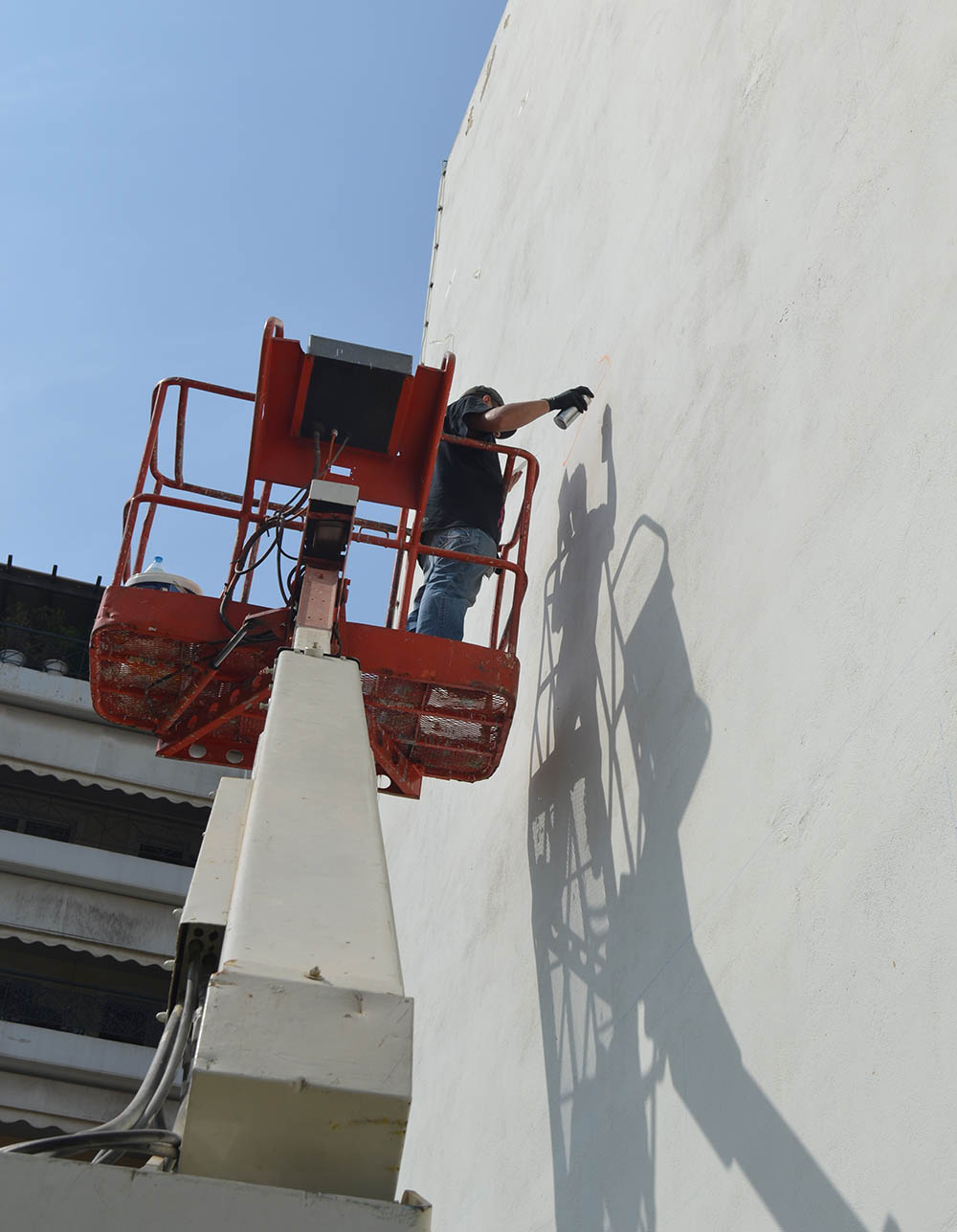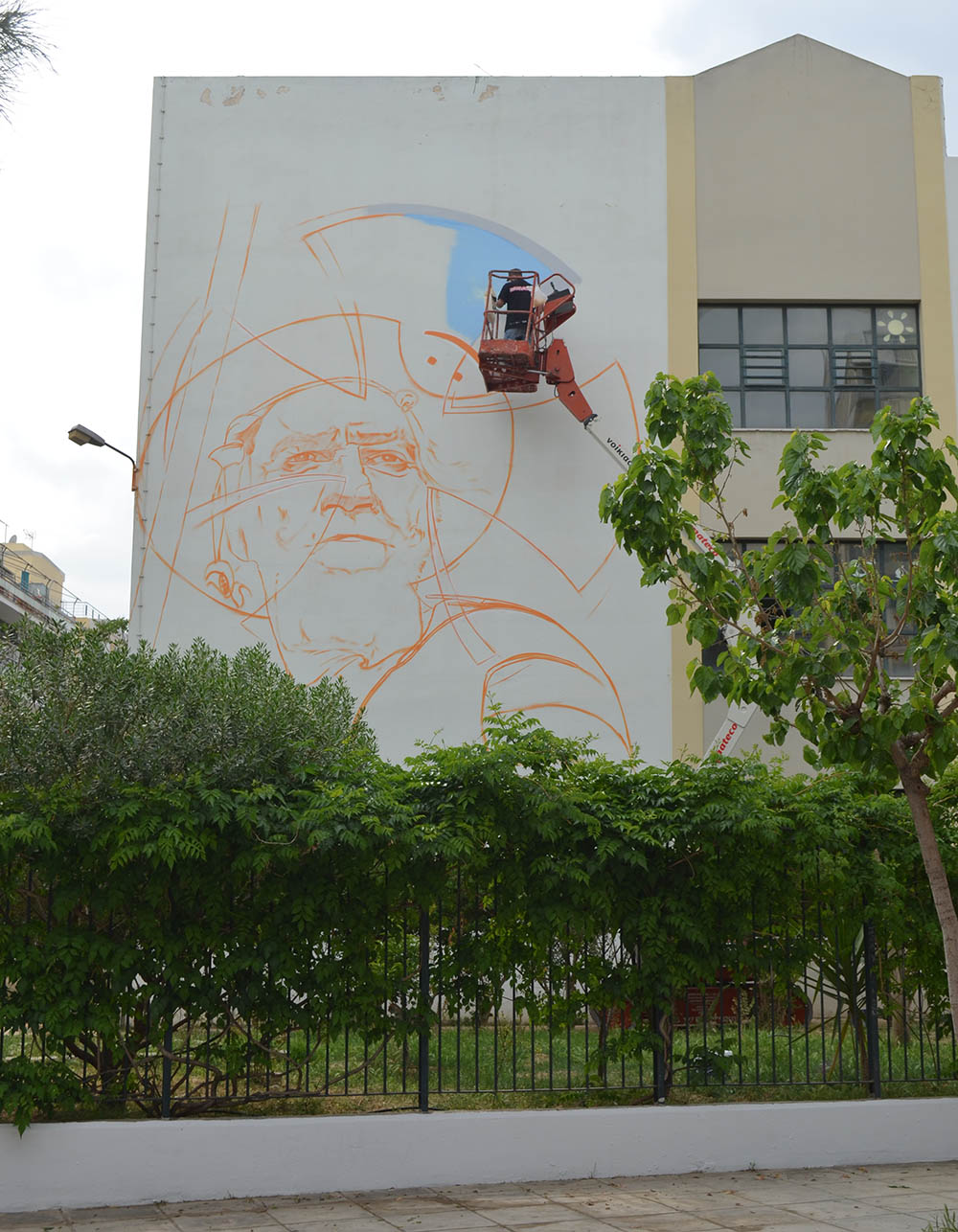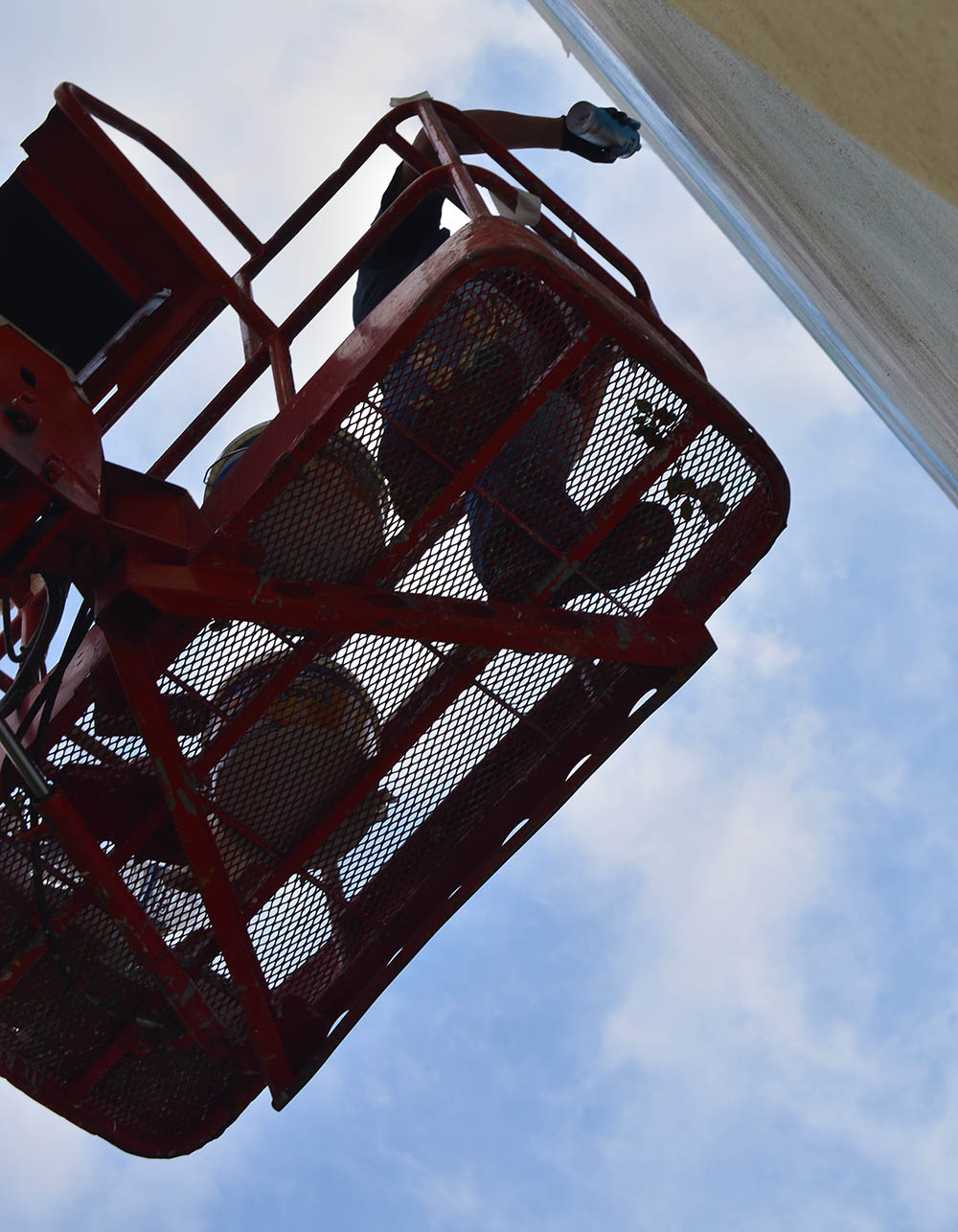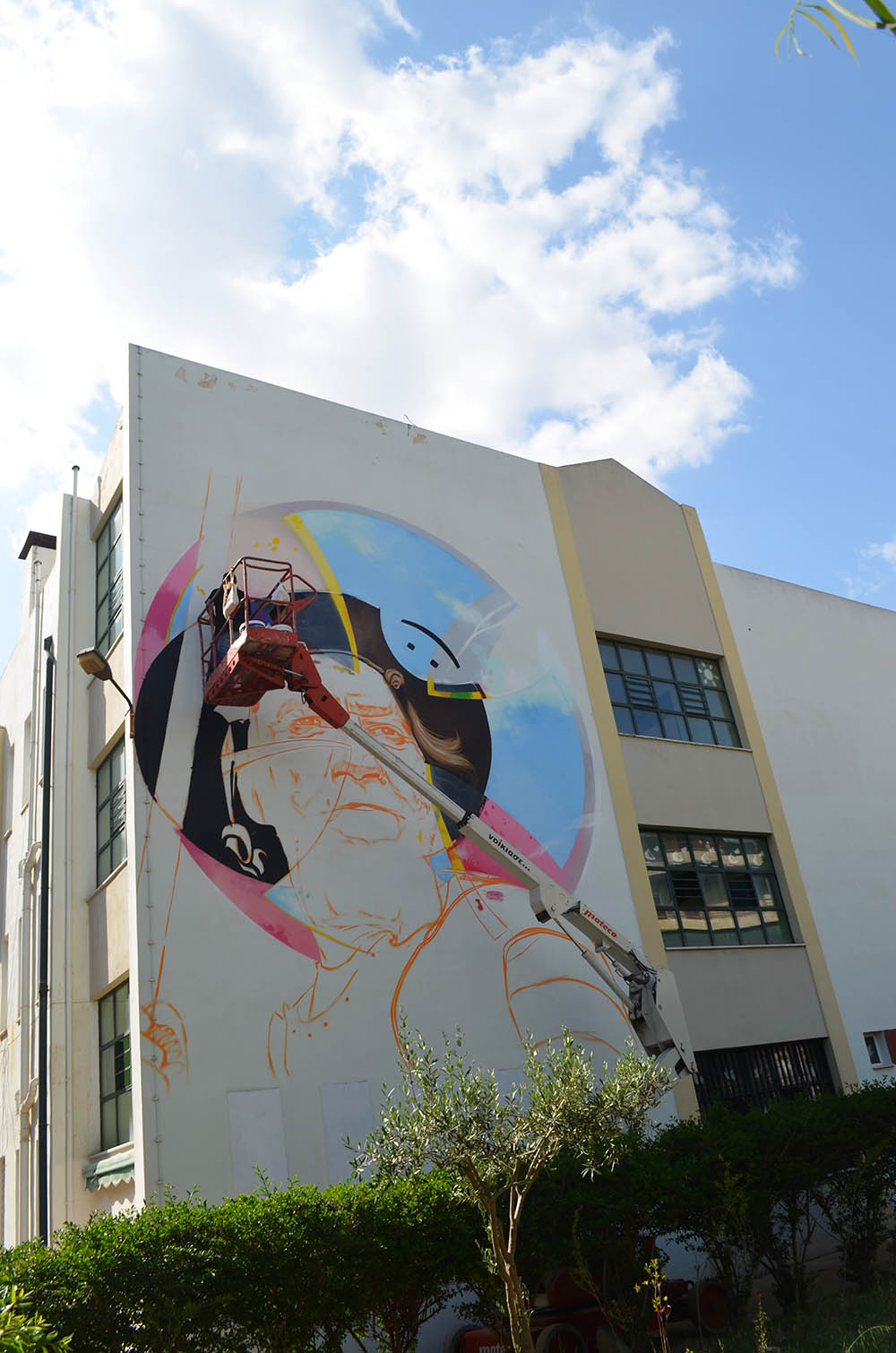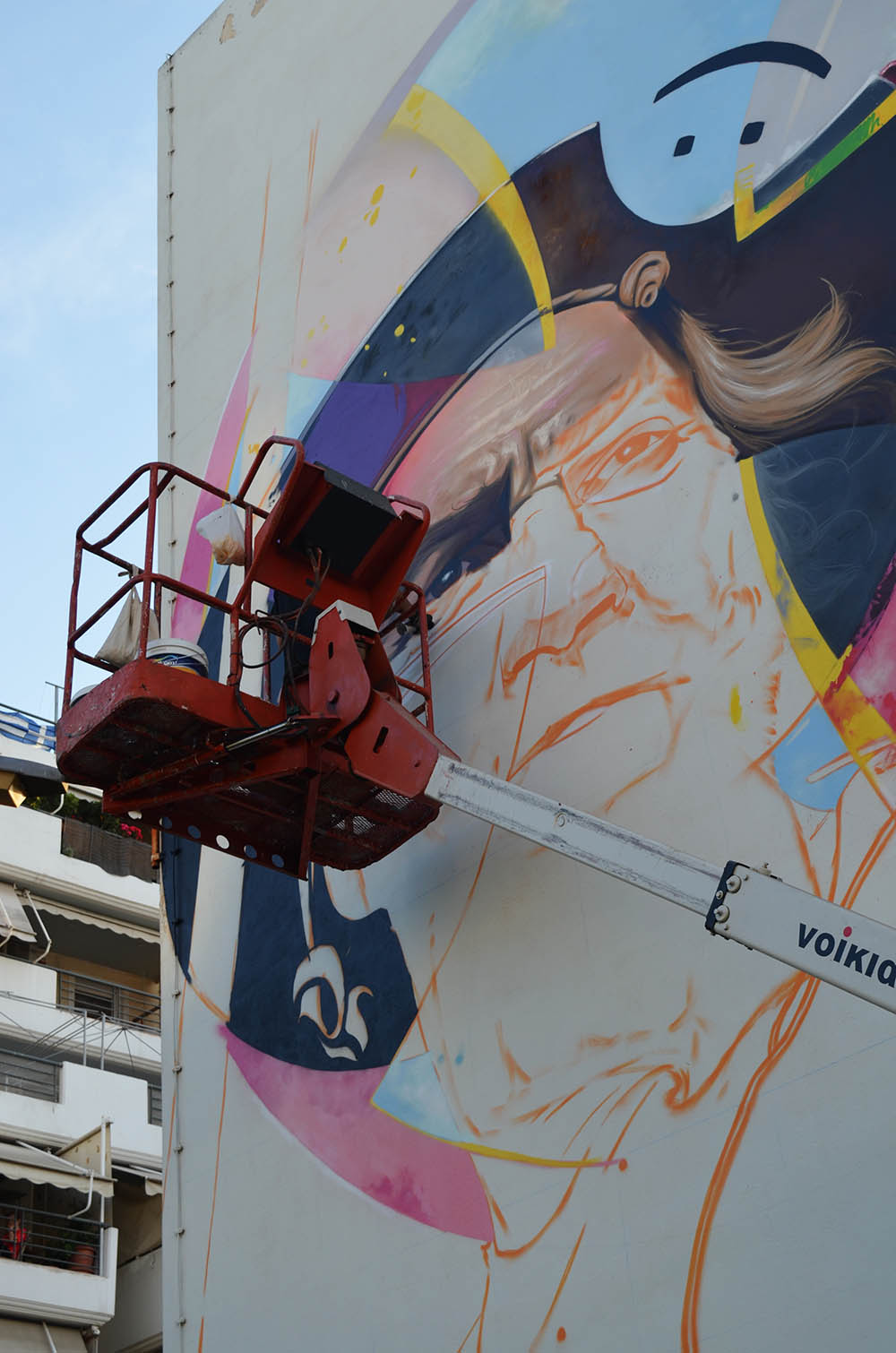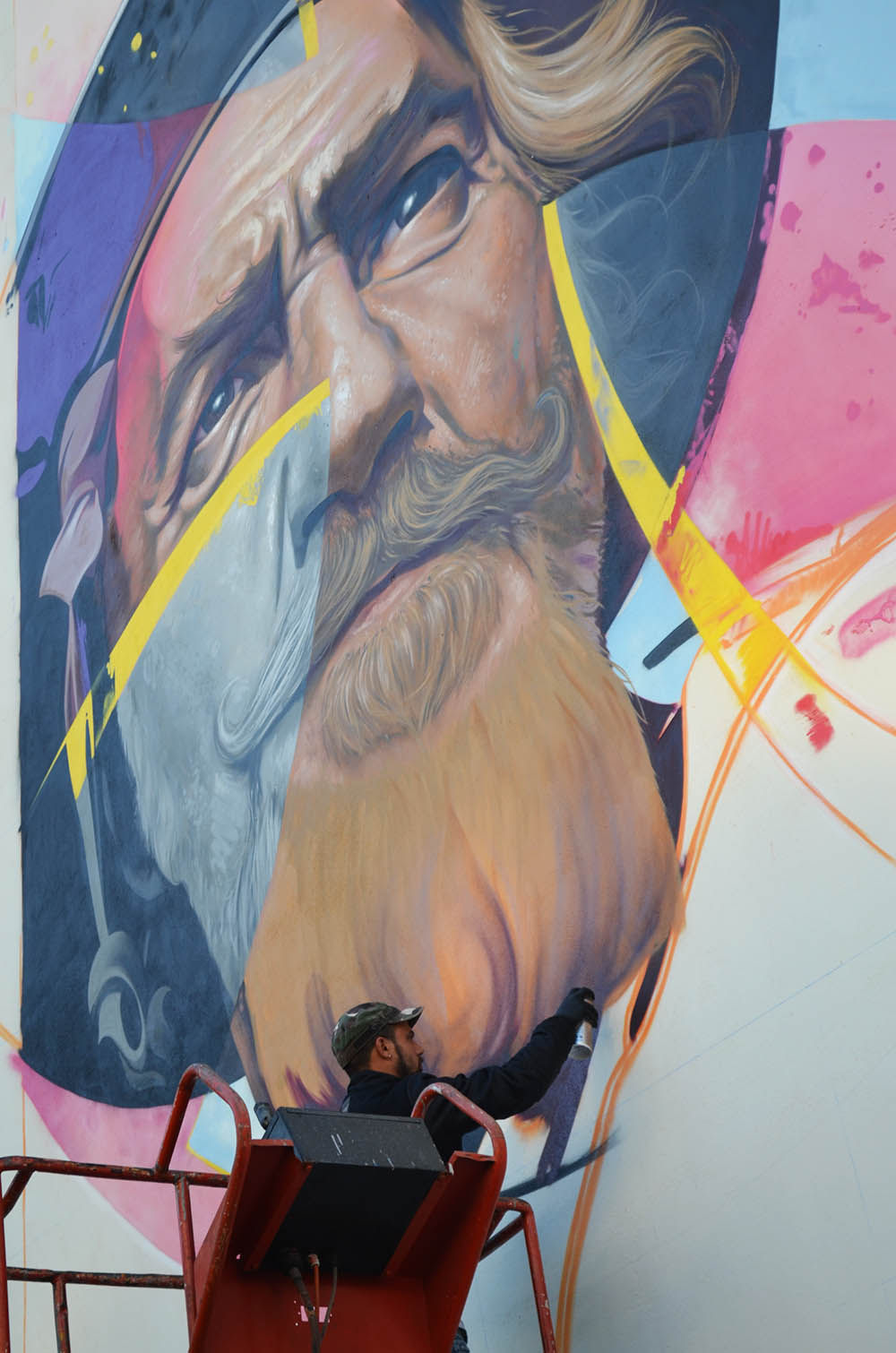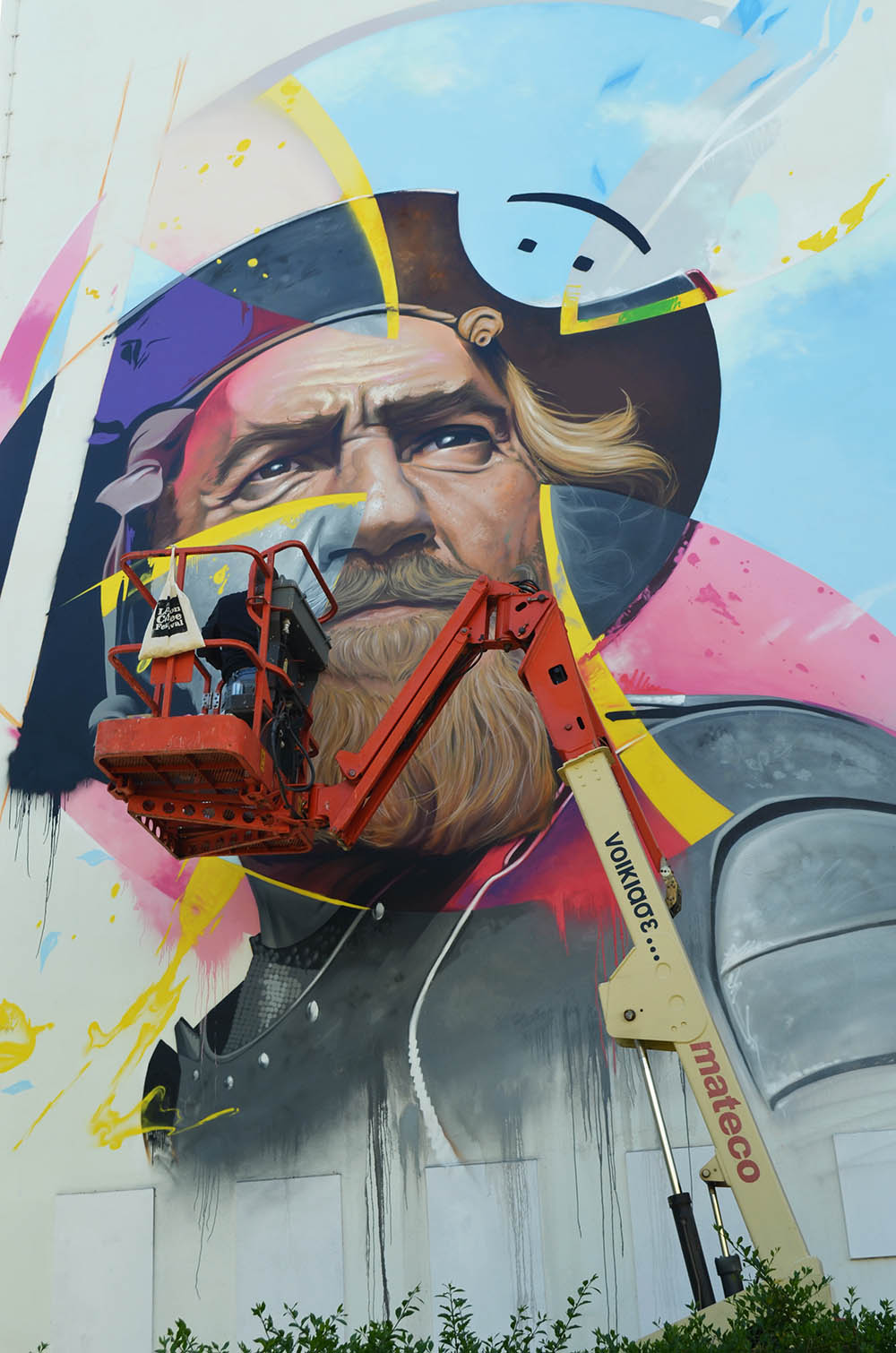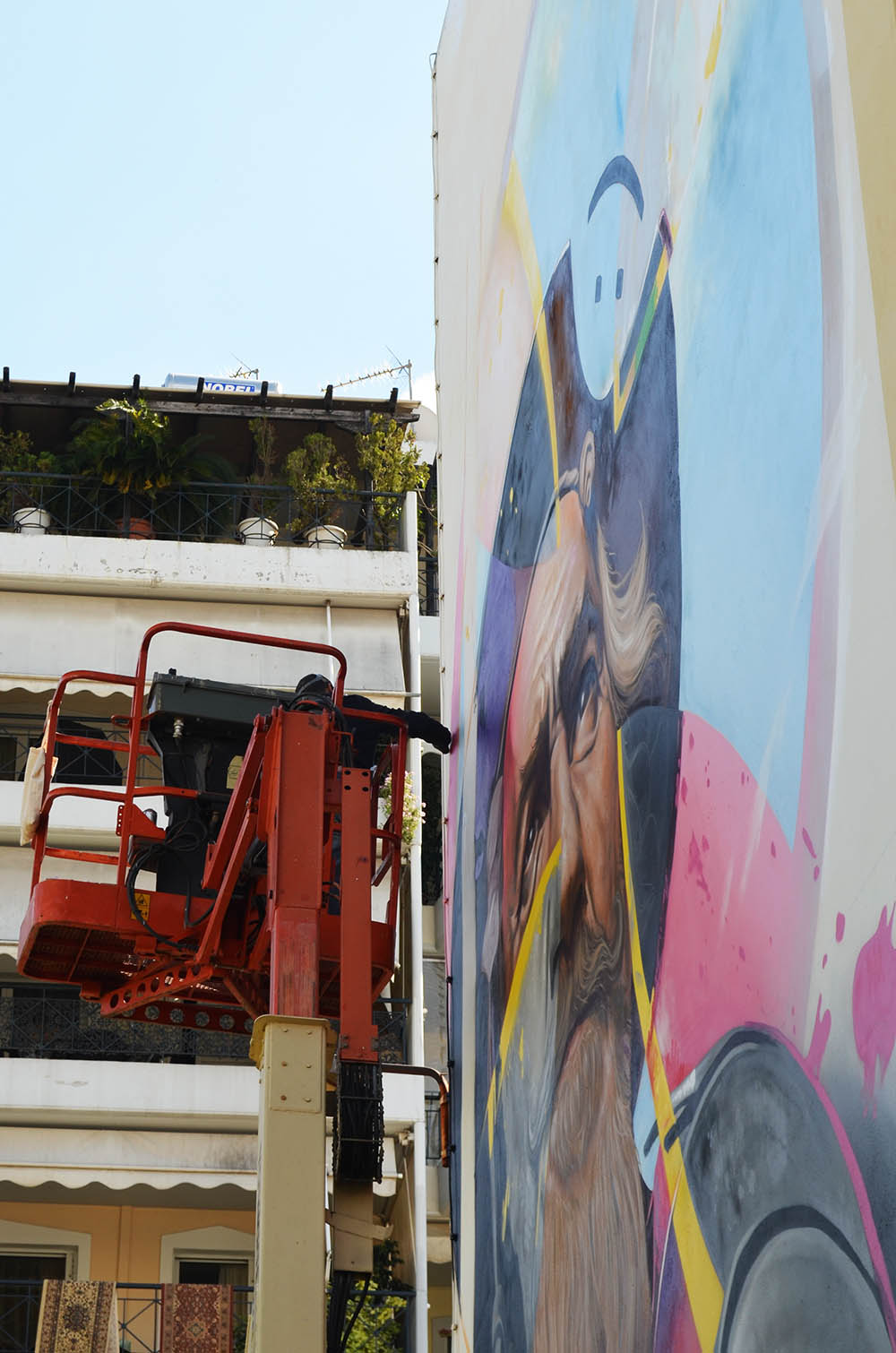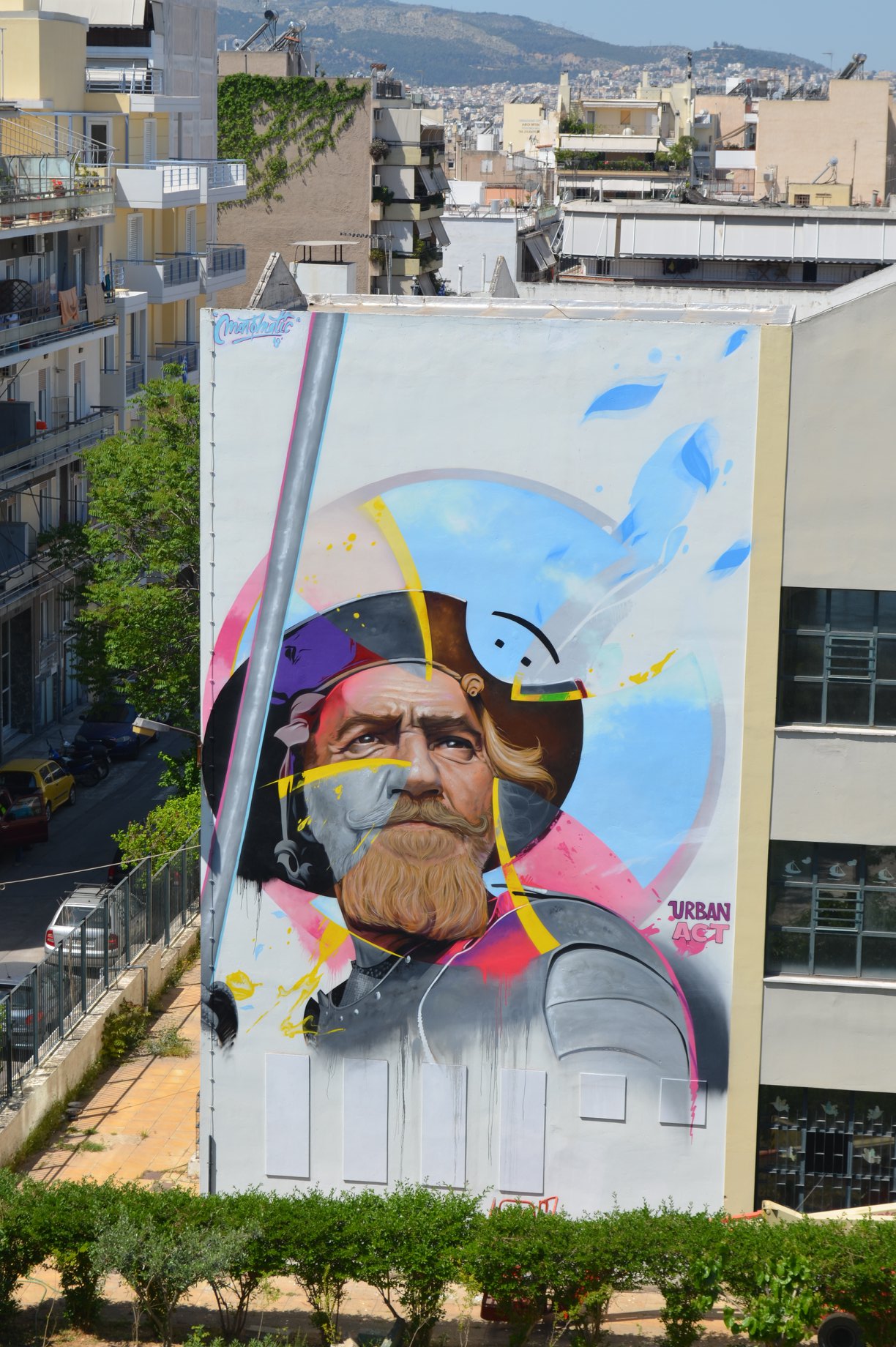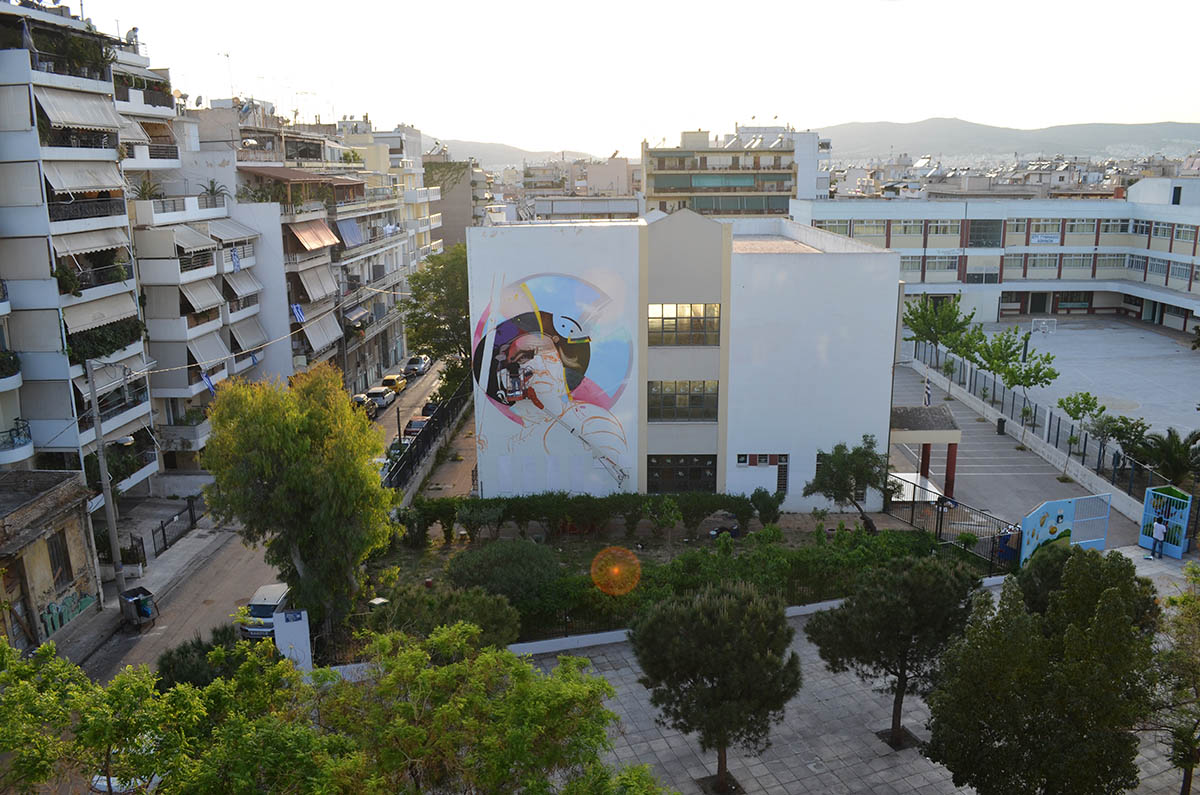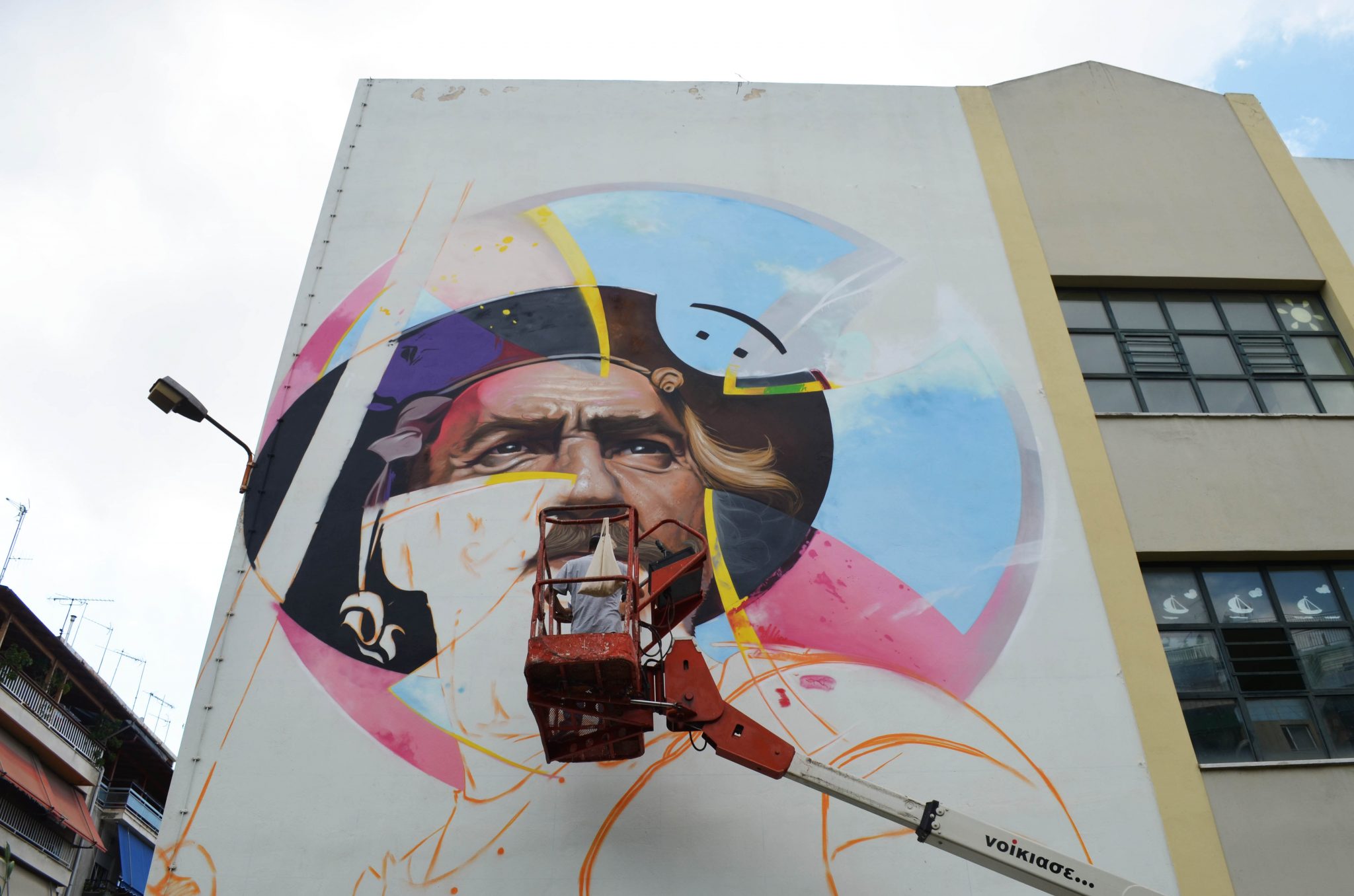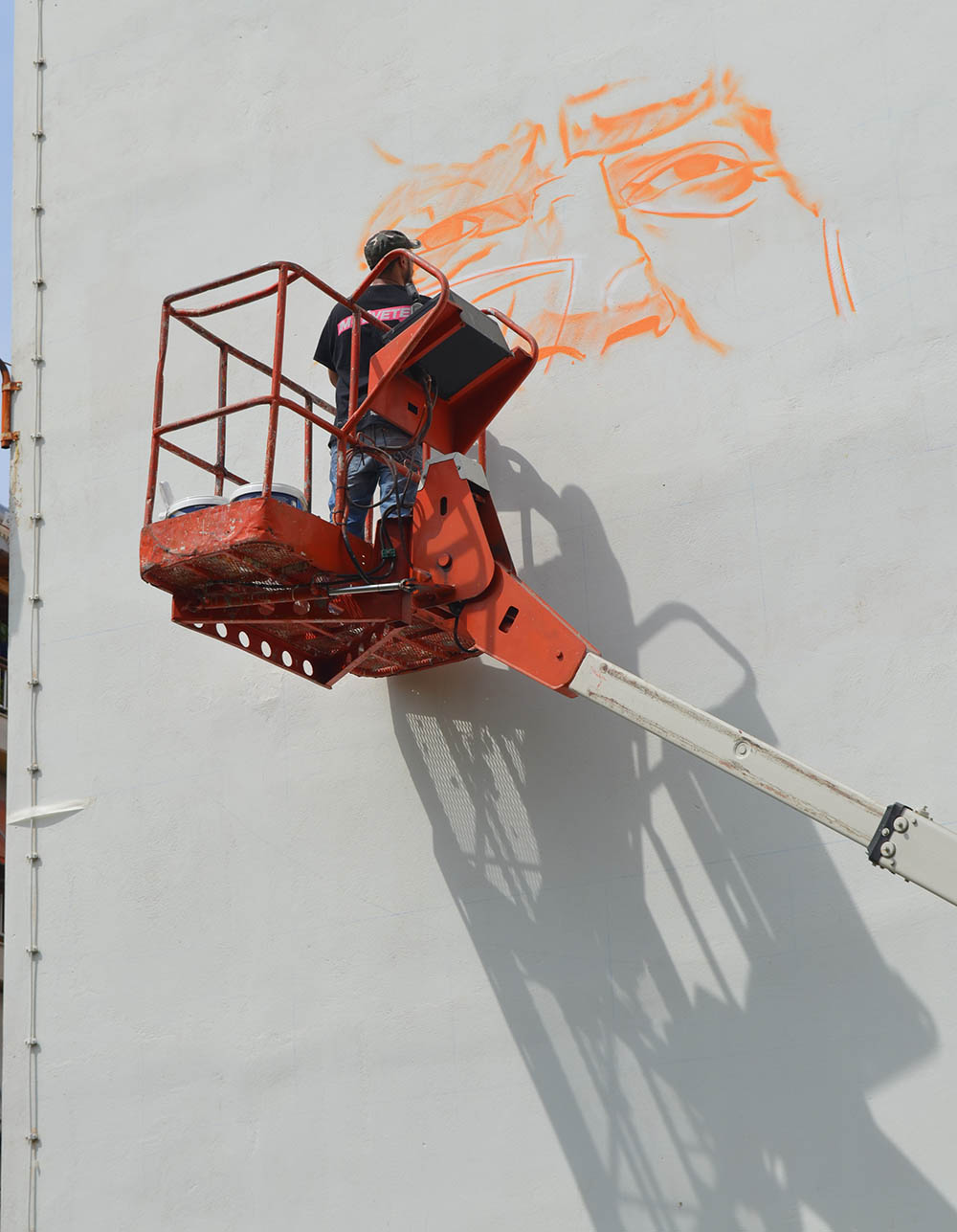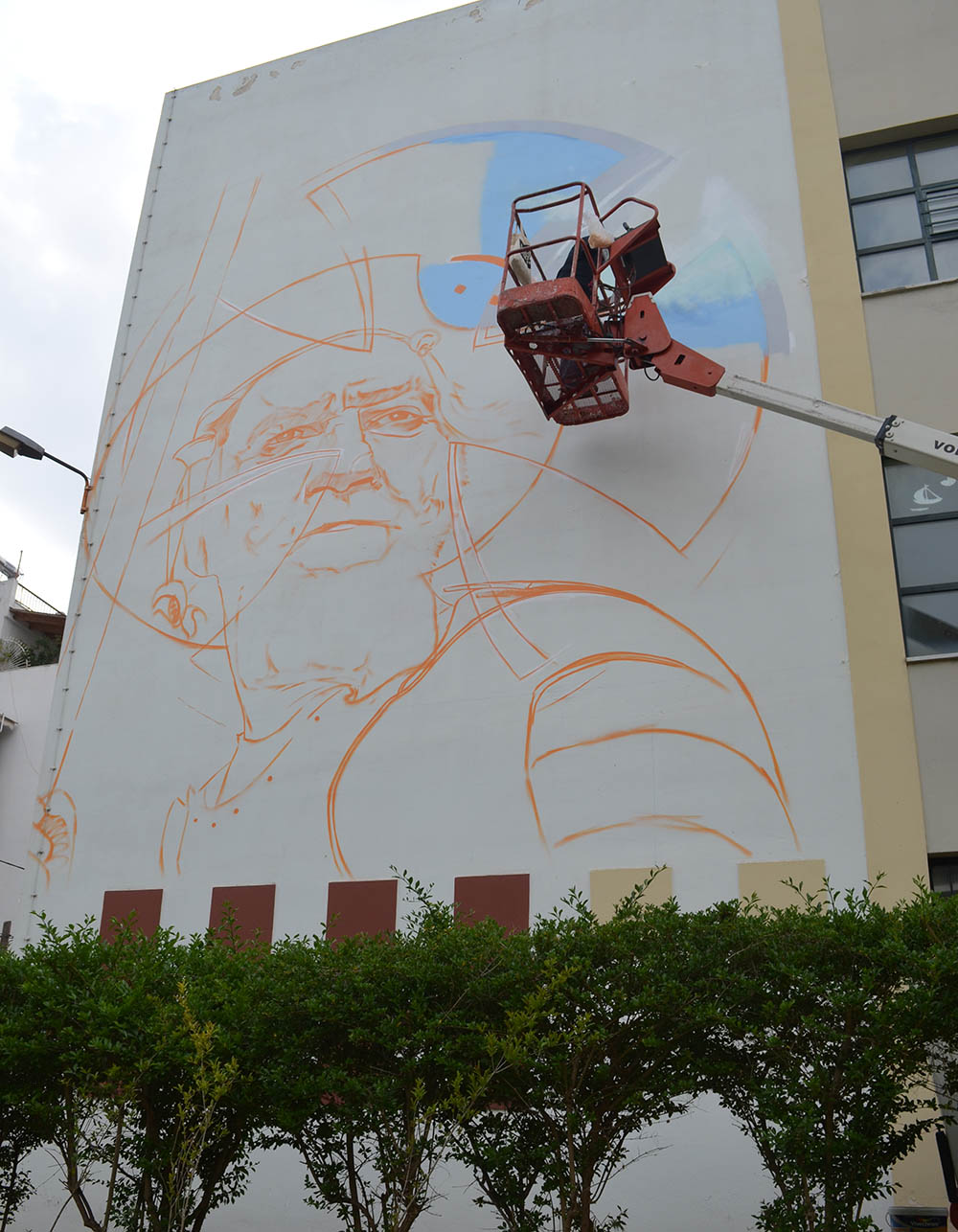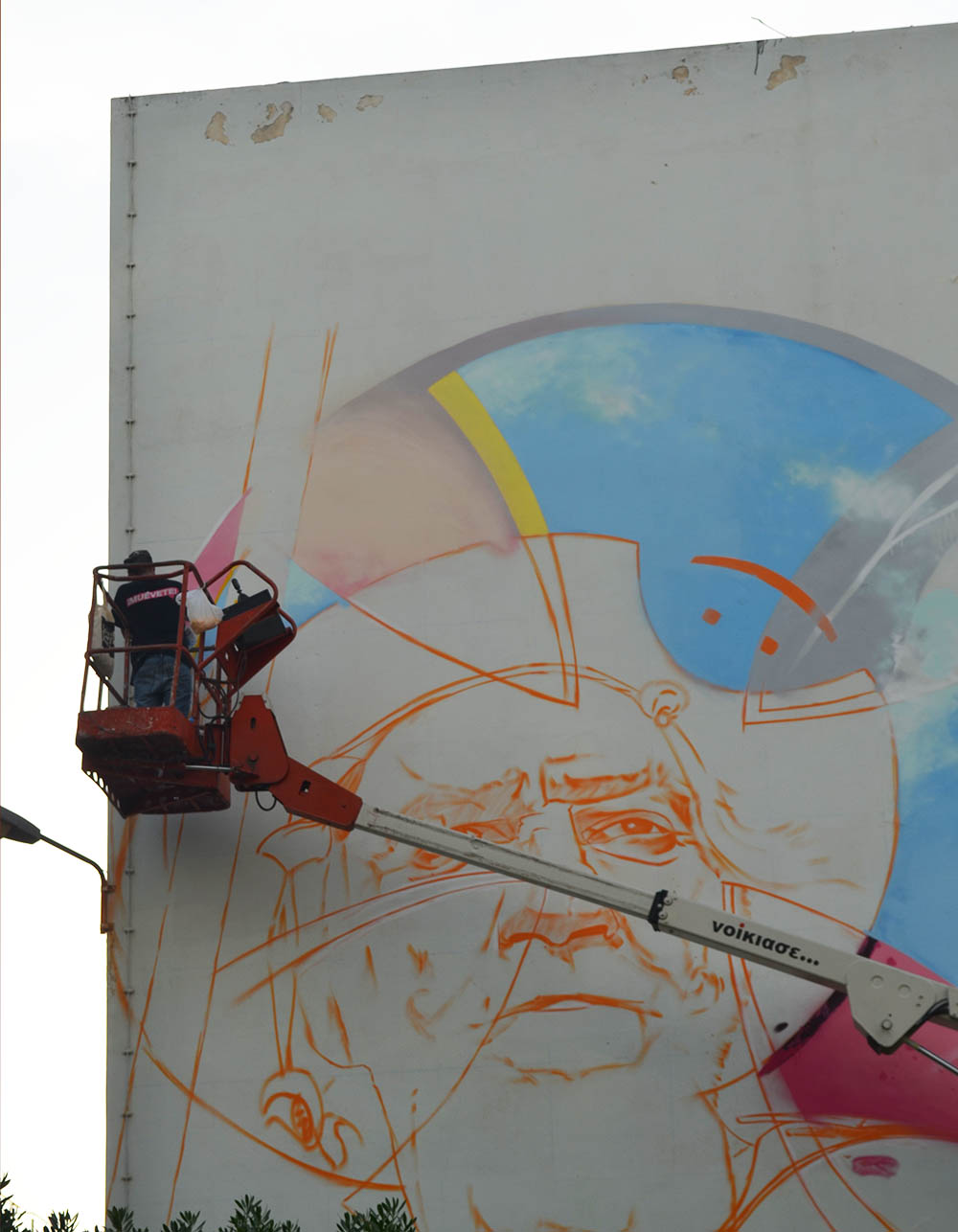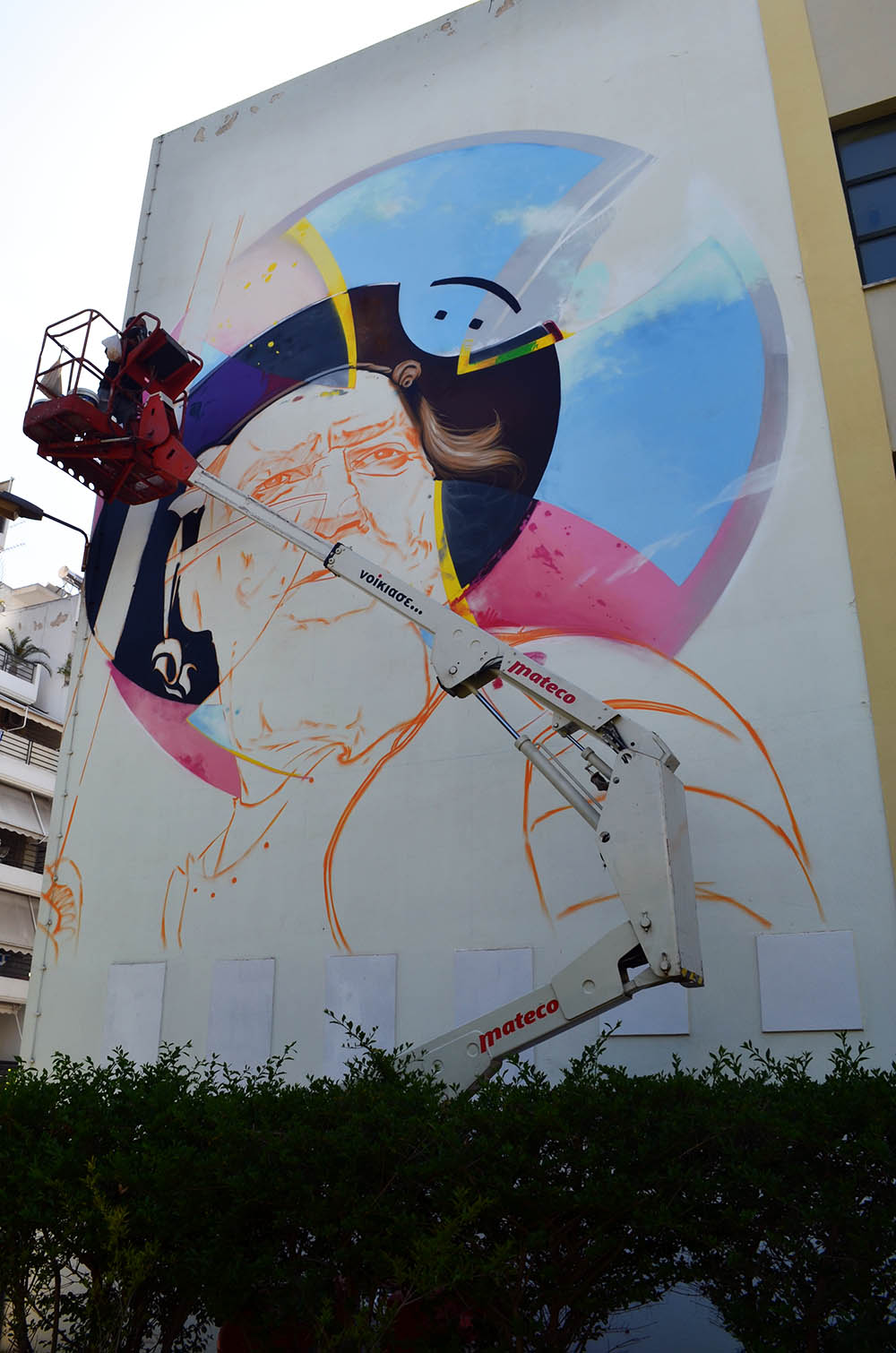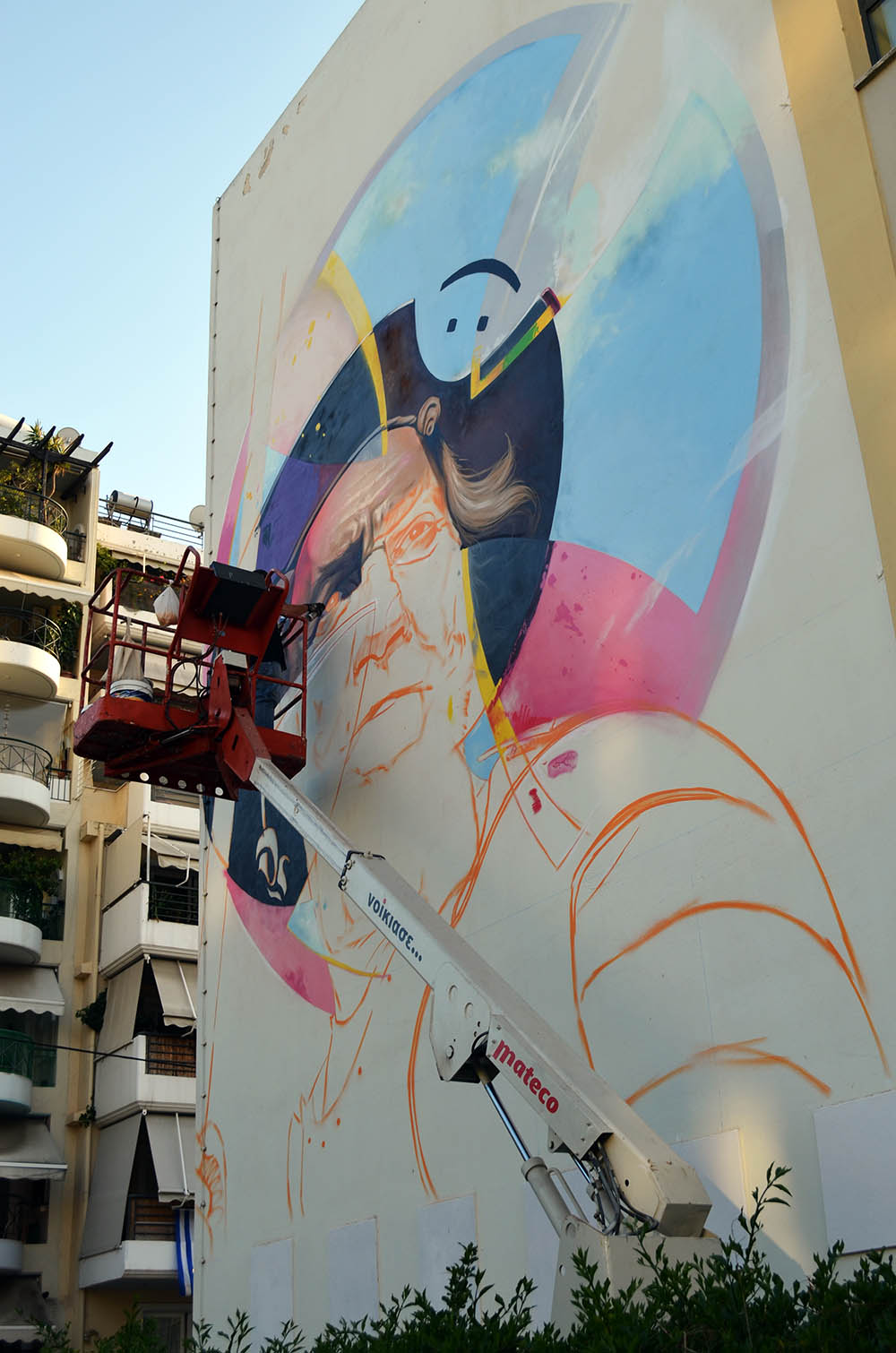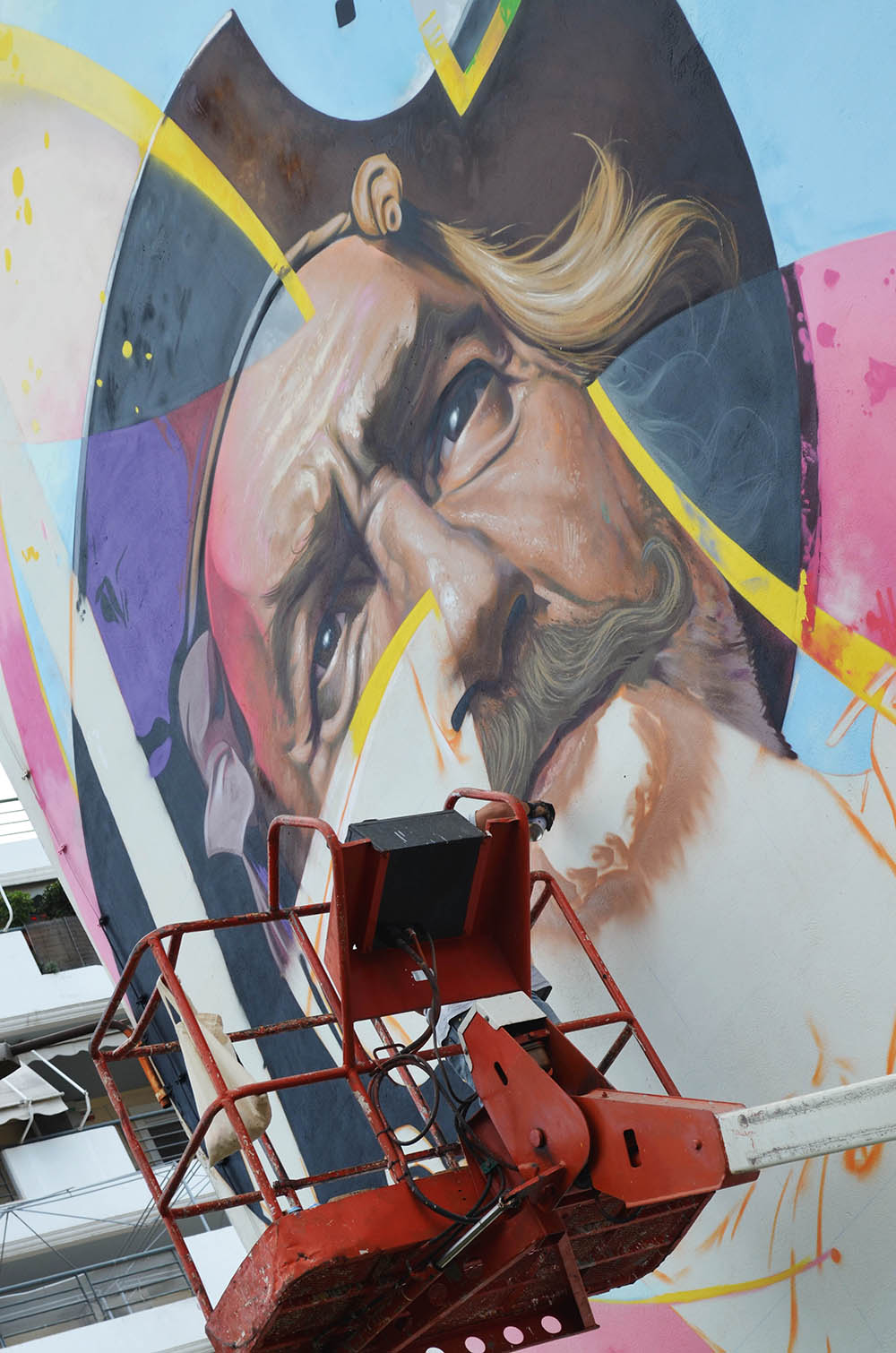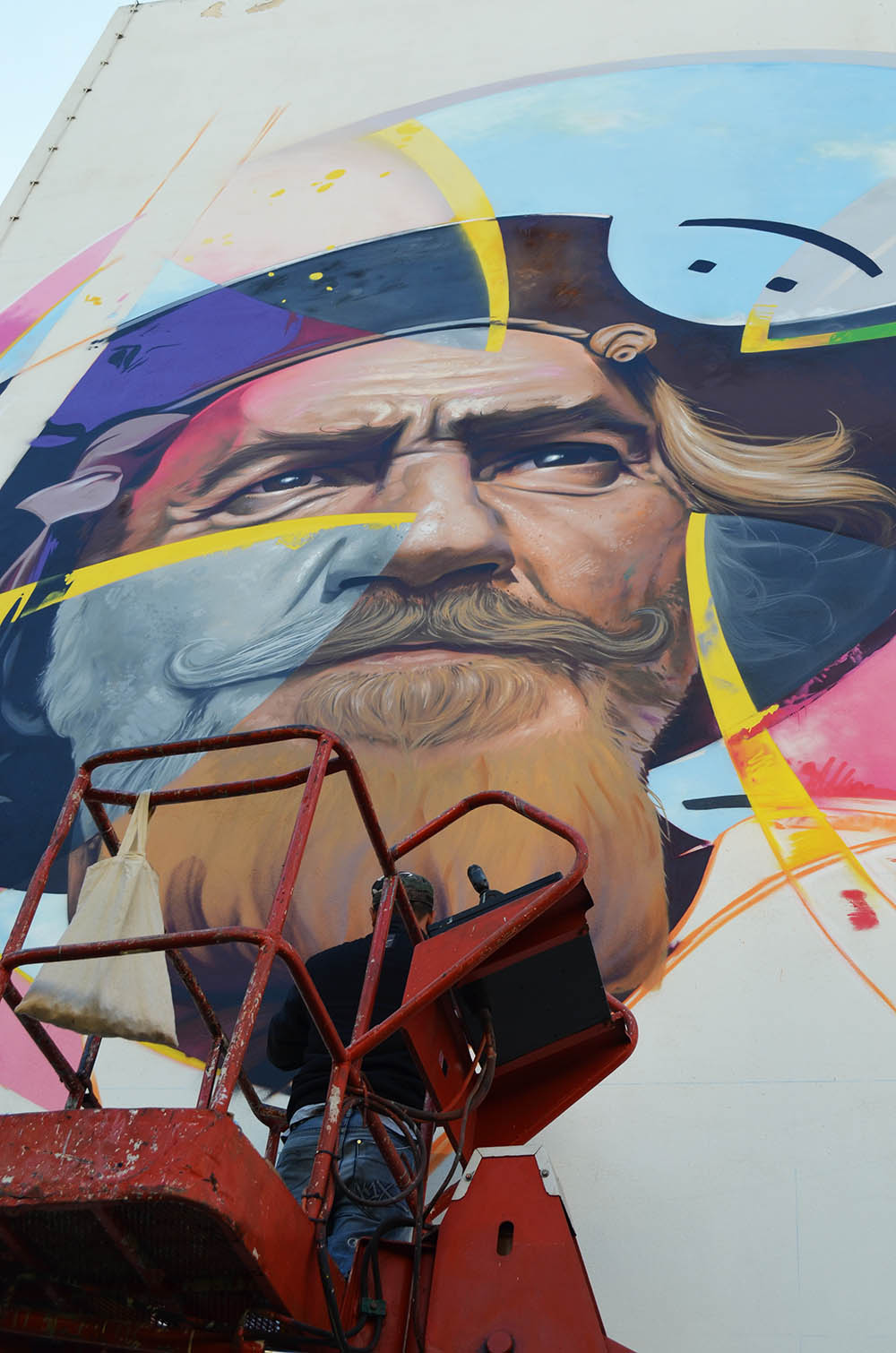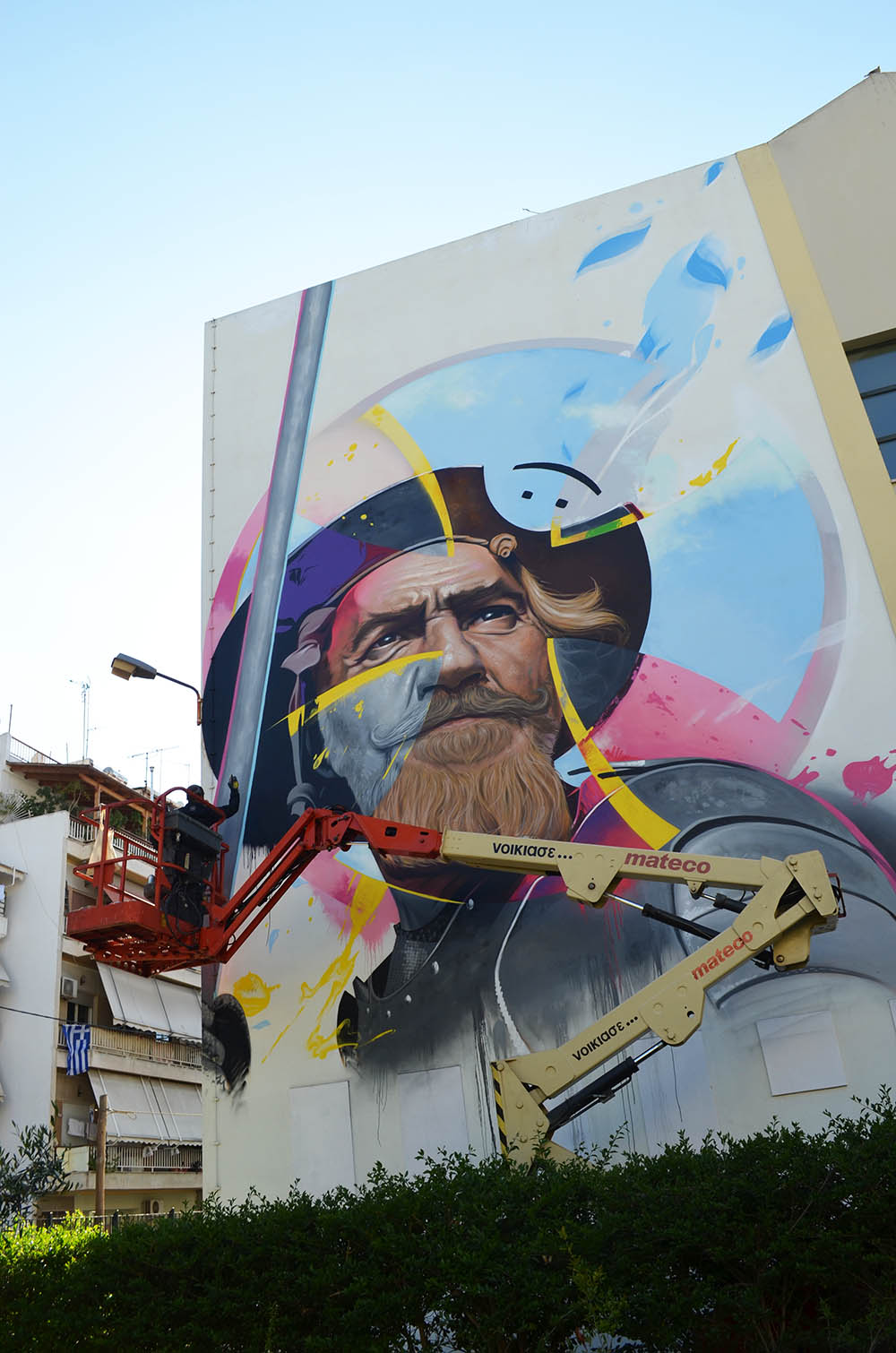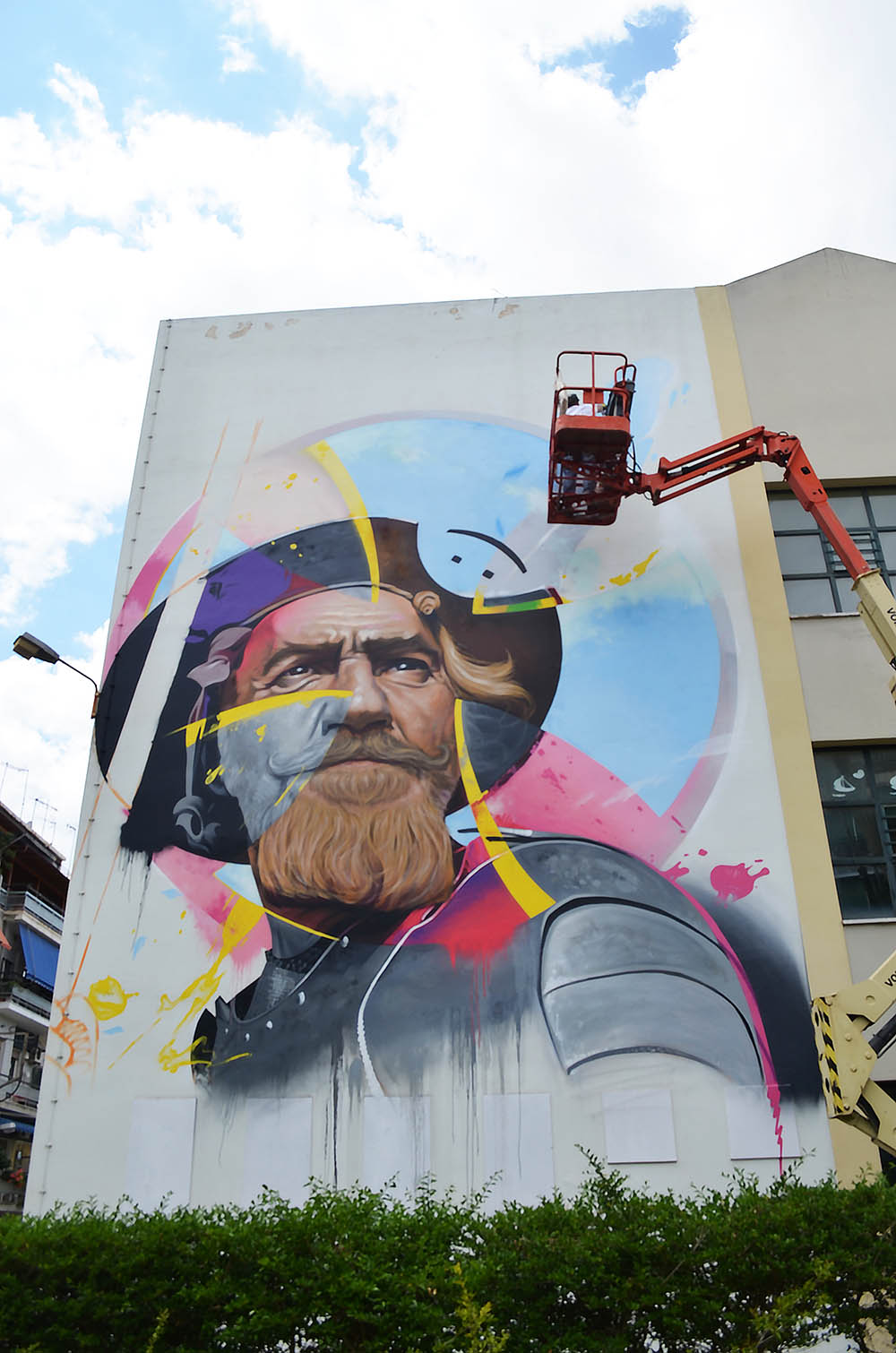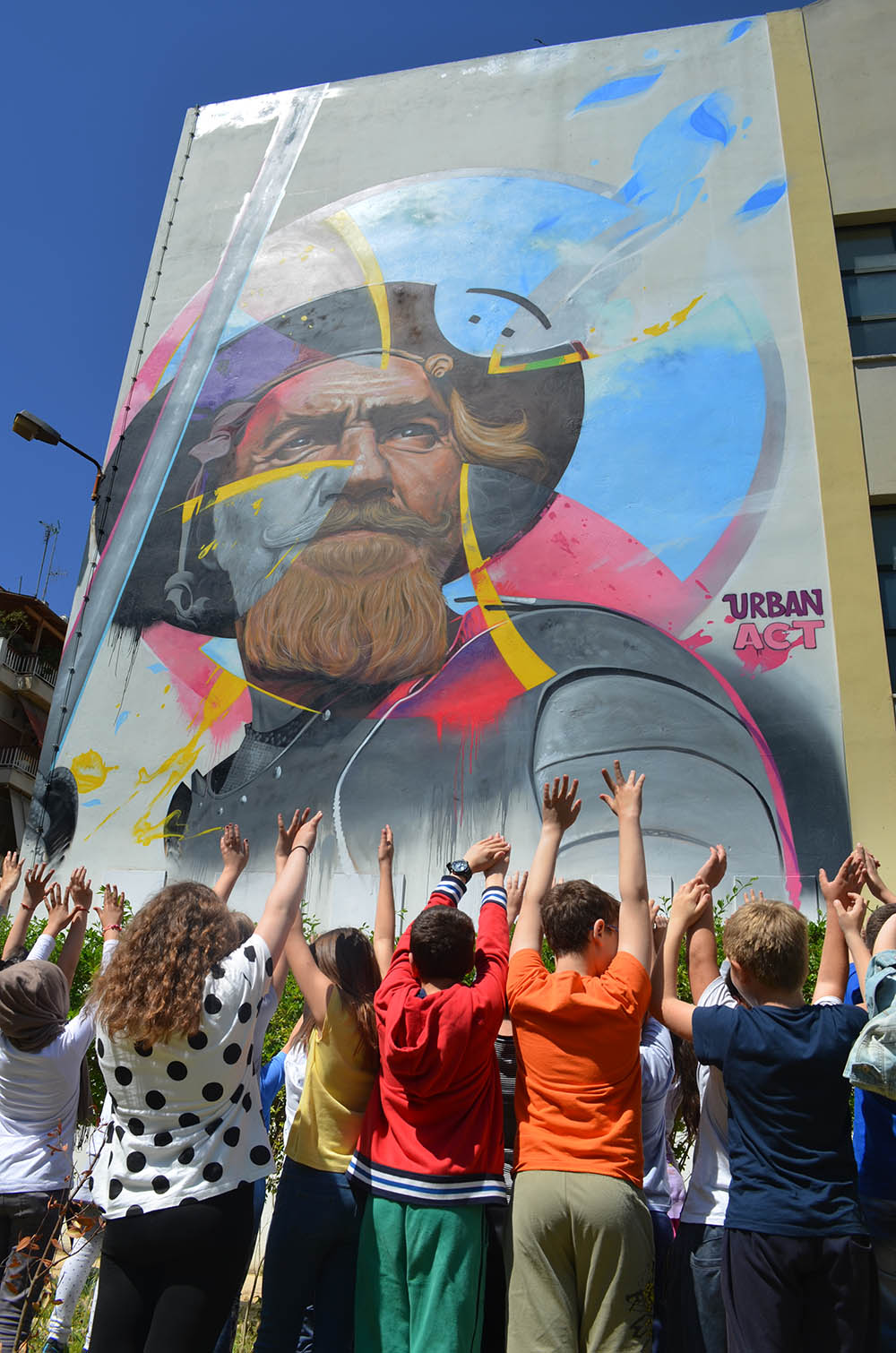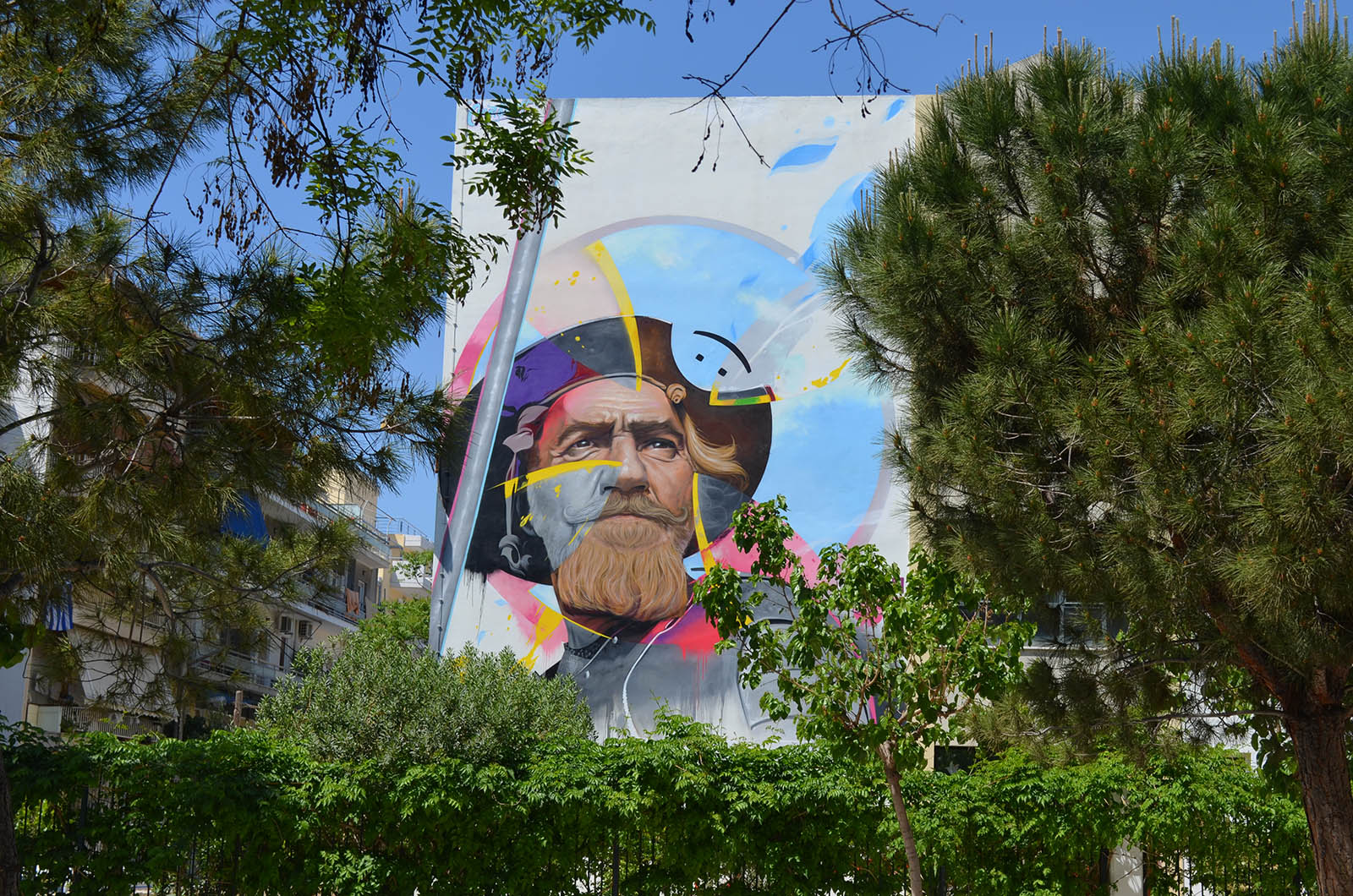April 2018
Athens (Greece)
Change the status quo with art
Global issues
Change the Status Quo with Art: One of the biggest hurdles that humans face today is a lack of empathy when it comes to the problems of others, or global issues that affect all of us simply because we cannot see how our actions can make immediate contributions towards these difficulties when they don’t exert some sort of influence on us on a daily basis – we do live in an age of instant gratification, after all.
The spray cans Keeper
Raise awareness
This is where art comes into play – we’re naturally excited and curious about things that make us wonder, about craftsmanship that takes our collective breath away. When art is then combined with a message, it begins to raise awareness about social issues that the masses may not have been inclined to take notice of beforehand, and thus provoke a paradigm shift in the way that we think or act. As the renowned Icelandic-Danish sculptor Olafur Eliasson says,
‘Art helps us identify with one another and expands our notion of we – from local to global.’
Change the status quo
Creative insight provokes change – this is not something new. Dating back millennia, artists have used many tools, spanning plays, songs, visual artwork and everything else at their disposal to cause social change and to revolutionize the status quo, whether it be through understated social commentary or brash critiques of culture.
Quixote – Fight the power
Many of us have been moved by art in one way or another before. We’ve seen it on film, where Sharmeen Obaid-Chinoy’s internationally acclaimed documentary on a Pakistani teenager who was shot for having eloped, ‘A Girl in the River: The Price of Forgiveness’, won an Oscar and led to Pakistani Prime Minister Nawaz Sharif clamping down on honour killings by passing new laws against it. We’ve also heard it on the radio – songs like Public Enemy’s ‘Fight the Power’ were played on repeat by rebel radio stations as a subversive form of communication in Serbia during Slobodan Milošević’s regime in Belgrade during the early nineties when they were banned from actually broadcasting any news. These are just some of the few examples of art transcending culture. Not just reaching out to a broad audience, but also motivating people into action, regardless of the artist’s initial intentions during conceptualization.
Step back and think
Miguel de Cervantes’ Don Quixote
Spanish street artist MANOMATIC’s latest mural in collaboration with Urbanact x Athens 2018 World Book Capital is one such piece in a similar vein. The modern-day depiction of Miguel de Cervantes’ Don Quixote – one of the most celebrated works of literary art, is a thought-provoking one that covers a myriad of social issues when analyzed on several levels.
Growing a beard
Modern-day consumerism
The juxtaposition of the globe on windmills as the backdrop to Don Quixote with the blue portion being somewhat disjointed and broken can be viewed as a form of social commentary on the lack of work on global warming and how not enough is being done to protect the planet’s oceans. In an even more cynical fashion, it can also be viewed as a critique on modern-day consumerism, where companies often effectively greenwash their activities in order to evoke customer sympathy and increase their profit margins without actually operating with consideration for the environment, as people continually seem to fall for these public relation spins.
Close up
Greece and Spain
This piece of art also carries a special meaning to the people around it in Athens, where it was painted on the wall of a school – considering that it is a visual interpretation of a famous scene from the original book where the titular character sees windmills as giants and is thus prompted to do battle against them, even though they are an imaginary enemy. The book was penned during the Eighty Years War where the Habsburg Netherlands fought for their independence against Spaniards, and because of that, literary experts theorise that this part of the book can be allegorically understood as a call to evaluate cause and basis for actions on both an individual level, and on a more global scale – the ulterior motives behind a nation’s foreign policy.
A reminder
It’s easy to then extrapolate from that and to draw a parallel meaning of the art in conjunction with the state of Greek politics and the country’s economic collapse.
Hope for change
Interpreting the visual from another perspective brings us to the topic of mental illness, and the stereotypes around it as well as the relative lack of available treatment even in developed countries, considering its prevalence. The inverted smiley face around Don Quixote’s head can be representative of a lost mind, as depicted in the story in the aforementioned scenario with the windmills, and how these diseases can affect everyone and anyone around us – even great people who are our heroes.
Artivism
Work like this encapsulates the core substance of ‘artivism’ – a movement that allows creatives to use their talent to create pieces with substance with the motive of activism. More and more artists around the globe are beginning to take to the streets to promote agendas that they believe in, with hope for change in the status quo by inspiring and mobilising the masses. It’s the modern-day evolution of pieces like Picasso’s Guernica – an anti-fascist oil painting that is thought to be one of his most influential, or Norman Carlberg’s Vietnam War era creations – some of the most politically-charged pieces of fine art that existed at that time, and artists like MANOMATIC have taken up the mantle to continue educating the public and raising awareness about vital issues through their craft.
Modern Street Art
For a period of time, fine art was viewed to be something elitist – due to its inherent costs, as well as a lack of proper cultural education worldwide. Not much of the public have keen interests in going to art galleries, and that can be a stumbling block. However, public art on streets has long been used to communicate and to lead – and with heavy support from brands, governments, NGOs and other organizations worldwide who have come around to this epiphany, modern street art is now seen as transformative form of creativity, used in many cases to rejuvenate older parts of cities, and graffiti-style art has since shed its long-held stereotype of being destructive and vandalistic.
Bravery, insight, creativity, and boldness
This shift in perception only bodes well for creators who hold a passion for social change to heart as the masses start to embrace these movements, while perhaps inspiring a whole new generation of artists – in Seth Godin’s words, people ‘who use bravery, insight, creativity, and boldness to challenge the status quo’ to follow in their footsteps, through their work. And with everything that’s going on in the world today, we certainly need more of those.
Text “Change the status quo” By VeryPrivateArt
- Thanks to Urbanact.gr for the support (Photos by Kiriakos)
- Cervantes Institute
SHARE Change the Status Quo with Art ON:

